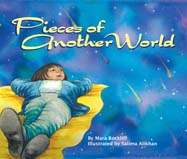Alignment to Standards for TX

| Grade | Number | Standard |
|---|---|---|
| 1 | 112.12 (b) (7) | the natural world includes rocks, soil, and water that can be observed in cycles, patterns, and systems. |
| 1 | 112.12 (b) (8) | the natural world includes the air around us and objects in the sky. |
| 2 | 112.13. (b) (8) | there are recognizable patterns in the natural world and among objects in the sky. |
| 2 | 112.13. (b) (8) (D) | observe, describe, and record patterns of objects in the sky, including the appearance of the Moon. |
| 3 | 112.14. (b) (8) | The student knows there are recognizable patterns in the natural world and among objects in the sky. |
| 3 | 112.14. (b) (8) (C) | relationship of the Sun, Earth, and Moon, including orbits and positions |
| 4 | 112.15. (b) (8) | there are recognizable patterns in the natural world and among the Sun, Earth, and Moon system. |
| 4 | 112.15. (b) (8) (C) | collect and analyze data to identify sequences and predict patterns of change in shadows, tides, seasons, and the observable appearance of the Moon over time. |
| 5 | 112.16. (b) (8) | there are recognizable patterns in the natural world and among the Sun, Earth, and Moon system. |
| K | 112.11 (b) (3) (B) | make predictions based on observable patterns in nature such as the shapes of leaves |
| K | 112.11 (b) (8) | there are recognizable patterns in the natural world and among objects in the sky. |
| K | 112.11 (b) (8) (B) | identify events that have repeating patterns, including seasons of the year and day and night |
| K | 112.11 (b) (8) (C) | observe, describe, and illustrate objects in the sky such as the clouds, Moon, and stars, including the Sun. |
| PK | PK.2. (C) | begins to recognize patterns in their environment (e.g., day follows night, repeated phrases in storybooks, patterns in carpeting or clothing) |
| PK | PK.2. (H) | uses patterns (such as growth and day following night to predict what happens next) |